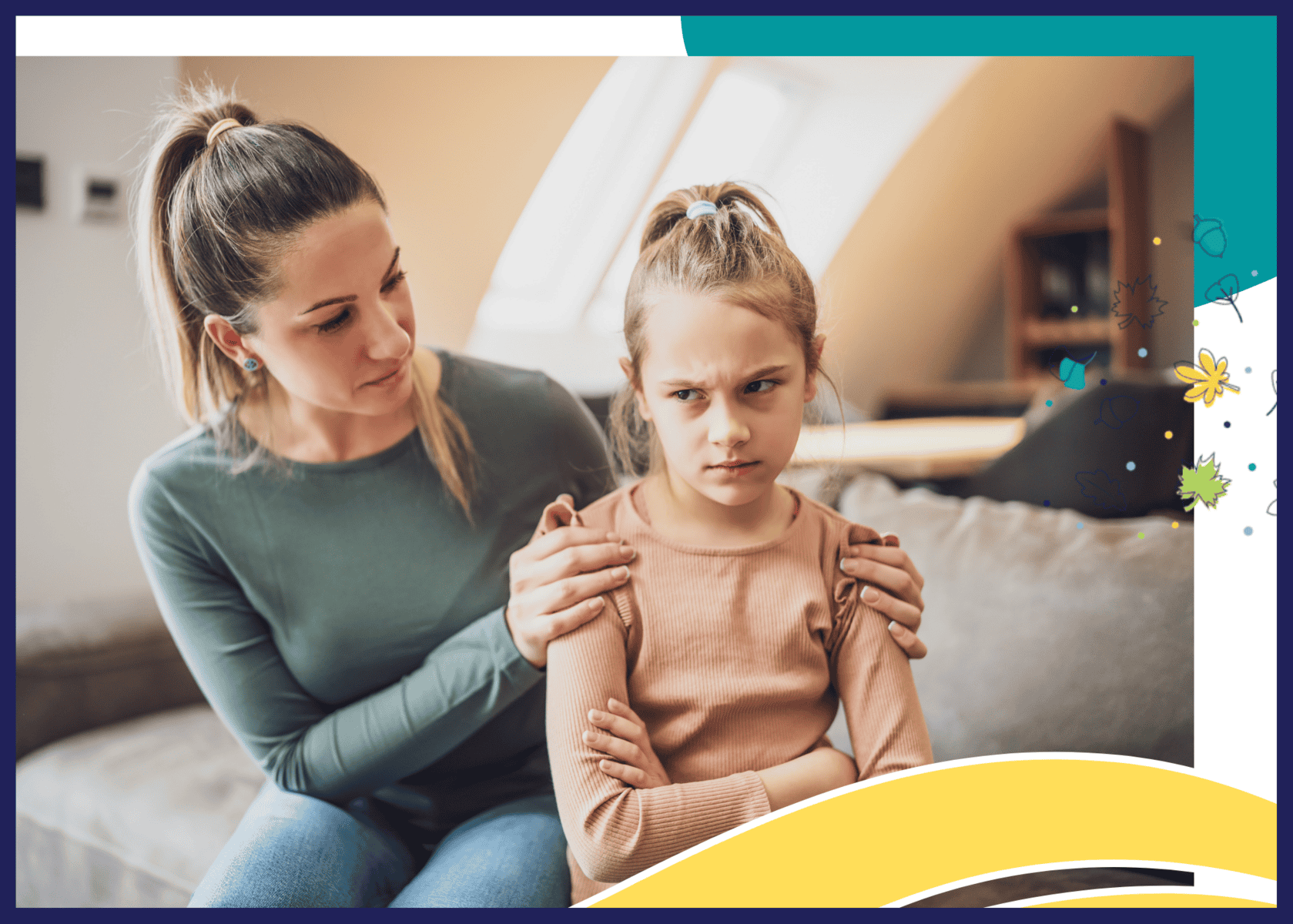When Helping Becomes Hindering: Understanding Family Accommodations for Childhood Anxiety
Have you noticed yourself making more changes to your daily routines and activities to reduce your child’s anxiety? Many parents of anxious children might find themselves repeatedly answering worry questions, letting their children avoid situations that could trigger their anxiety symptoms, and placing limits on their own behaviour and interests so that their child feels less day-to-day distress.
These modifications are named family accommodations – and if you are doing it too, you are not alone. In fact, up to 97% of parents with anxious children engage in accommodations, making it the rule, not the exception.
Family accommodations often begin in small, well-meaning ways—like offering extra reassurance at bedtime or steering clear of a triggering social event. Over time, these adjustments can become embedded in daily life, shaping how your family moves through the world. You may find yourself building your day around avoiding meltdowns or preemptively stepping in to calm your child before anxiety takes over.
At first, these accommodations can feel like the most compassionate and effective way to help. After all, who wouldn’t want to ease their child’s suffering? And in the short term, they often do just that—offering immediate relief for both child and parent. But in the long run, these well-intentioned efforts can inadvertently keep anxiety alive, preventing children from developing the confidence and coping skills they need to navigate life’s uncertainties.
In this blog, we’ll explore what family accommodations are, why they’re so common, and how they can sometimes reinforce the very anxiety we’re trying to soothe. Most importantly, we’ll offer supportive strategies that can help you shift from managing your child’s anxiety for them to empowering them to manage it themselves—without sacrificing connection, empathy, or your own well-being along the way.
What Are Family Accommodations?
Family accommodations are behaviours that parents engage in (or don’t engage in) in order to regulate their child’s anxiety. They often come from a place of love, protection, and parental instinct.
There are two types of accommodations that parents make to soothe their children:
- Active accommodations – also known as participatory accommodations – occur when parents engage in extra behaviours to regulate their child’s anxiety.
For example, if you know that your child’s social anxiety is triggered when you go to restaurants, you may begin ordering for them so that the interaction goes smoothly. - Passive accommodations – also known as modifying accommodations – occur when parents stop engaging in behaviours that they know will trigger their child’s anxiety.
For example, if your child’s separation anxiety becomes heightened when you go to work in the morning, you may reduce your work hours altogether to avoid those activating moments.
Because parents are so highly attuned to their child’s emotions, it can be easy to notice when their anxiety is about to become activated. You might see the tension rising in their shoulders, hear the repeated questions starting to bubble up, or catch that look in their eyes that says, “I can’t do this.” And it makes sense that you would want to do whatever is needed to provide relief in those moments – but short-term relief can lead to longer-term symptoms of anxiety.
How Accommodations can Grow
Take Sarah, for instance—a mom of two, whose 9-year-old son, Max, struggles with intense worries about germs. At first, she started wiping down his lunchbox more carefully and helping him avoid certain foods that he found “contaminated.” Soon, Sarah found herself washing his clothes twice a day, changing their grocery shopping routine to avoid “unsafe” aisles, and skipping her regular yoga class so she could be home in case Max had a meltdown. Each change felt manageable in the moment and seemed to help calm Max’s nerves—but over time, the list of accommodations grew, and Sarah’s own life began to feel smaller, too.
In Max’s case, the more Sarah accommodated, the more rigid and distressed he became when routines couldn’t be followed exactly. Without realizing it, the very efforts meant to help had begun reinforcing the idea that Max couldn’t face uncertainty or discomfort on his own.
When Helping Starts to Hinder Progress: The Cycle of Accommodations
Anxiety sometimes operates like a false alarm. Situations that are typically neutral set off signals in our brains that communicate that we are in some type of danger. That can lead to the development of anxiety disorders, where our brains are constantly firing off danger signals in situations where we are actually safe.
When parents accommodate their child’s anxiety, it can send a message that says, “that situation was a real threat, and we will save you from it every time”. The reality is that no parent wants their child to feel like they can’t handle their anxiety. Anxiety is a natural process that everyone experiences in life – and while the easiest choice is to protect your child from feeling that anxiety, they might start to believe that they can’t cope with the distress.
In short, the in-the-moment relief that accommodations provide end up resulting in anxiety symptoms that seem like they’re getting worse in the long run.
How Can I Tell If I’m Accommodating My Child’s Anxiety?
Here are some common signs that you might be over-accommodating your child’s anxiety:
- You have fewer independent boundaries with your child – their anxiety may be controlling your actions, your emotions, and your physical boundaries.
- You notice that your family activities and routines are shaped around your child’s needs.
- You feel like you’re stuck in a loop of doing the same things every day to prevent your child from getting upset.
If this is coming up for you, know that there are ways to improve the quality of life for yourself AND your child. The truth is that they can handle distress, and that begins with support from the people who care about them the most.
So, Should I Stop Helping My Child?
Not in the least! Children with anxiety need support—deeply, consistently, and compassionately. But support doesn’t always mean stepping in to remove the obstacle. Instead, it means walking alongside your child, showing them that they are capable, even when things feel hard. The goal isn’t to eliminate anxiety altogether (which isn’t possible), but to help your child learn that they can tolerate discomfort and come out the other side stronger.
Support looks like setting loving limits while also holding space for big emotions. It means not rushing to fix, but instead offering the kind of calm presence that says, “I believe in you.” When parents shift from protecting their child from anxiety to coaching them through it, it builds confidence, emotional resilience, and trust in themselves.
One powerful way to do this is through supportive statements—language that validates what your child is feeling while gently encouraging them to face the moment. It might sound like:
“I can see how worried you are right now, and I know you can get through this.”
Over time, these kinds of messages help rewire a child’s internal belief system—from “I can’t handle this” to “This is hard, but I’m not alone, and I can try.”
SPACE Treatment in Hamilton and virtually across Ontario
At Acorn Counselling, we offer support for parents who are sharing this experience through a group format called SPACE treatment, developed by Dr. Eli Lebowitz at the Yale Child Study Center. In our Supportive Parenting for Anxious Childhood Emotions group, we help parents learn how to reduce accommodations in a thoughtful, step-by-step way—while strengthening the parent-child relationship.
If you’ve been feeling stuck in the loop of anxiety and accommodation, you’re not alone—and there is a way forward. With the right tools and support, families can move from a place of fear and avoidance to one of confidence, courage, and connection.
Most recently, our Clinical Intern Julia Kay completed SPACE training, and is supporting families through group and individual sessions as well. To learn more about Julia, you can connect with her on our clinical intern team page.





